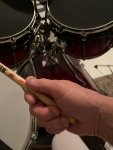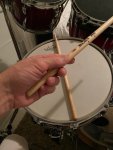Yaron Glazer
Member
I watched the hand and feet deconstruction videos. Is that you in the video? Seems fishy that Counterspiral is brand new, deals with the exact same things you ask if anyone does in the other thread, and now you are here showing it off.
If it's not you, I apologize. If it is you, coming to a forum and fishing for "customers" is a horrible way to sell anything.
BTW, the stick is supposed to rotate freely in the hand as you play. Keeping a solid grip on it to do the spirals can potentially damage the hands through impact and vibration.
It is me, but I'm not sure what you mean by "customers" - everything on the site is free and there are no ads. As I understand it, a free exchange of information is a core function of forums. My other thread is an attempt to learn what else is out there that people find useful. Not sure what's fishy about that.
As for your substantive criticism, that has not been my experience. I've found that gripping the stick firmly and using spin adds another dimension to playing and provides much more control than a freely rotating stick. And the exercises I've detailed on my website did more to develop my hands (and feet!) than anything else I've encountered, though I am still working my way through some of the suggestions people kindly made on the other thread.
I do agree that this training (and any other training) should be approached with caution. If you simply change your grip to the one I suggest and start whaling away on your kit, you very well may do some damage. But if you take it slow and use these exercises to develop your hands, focusing mainly on drum pad work, then it shouldn't be a problem. Why don't you give it a try?



